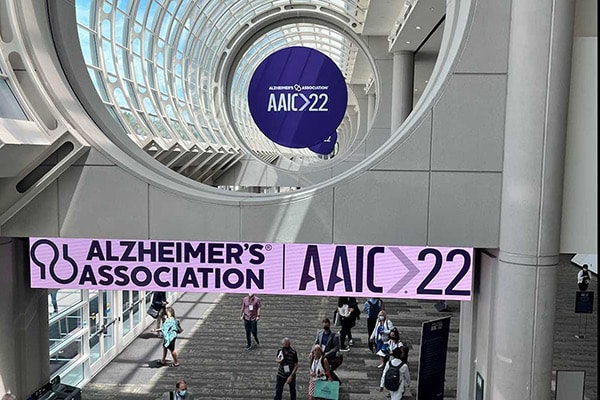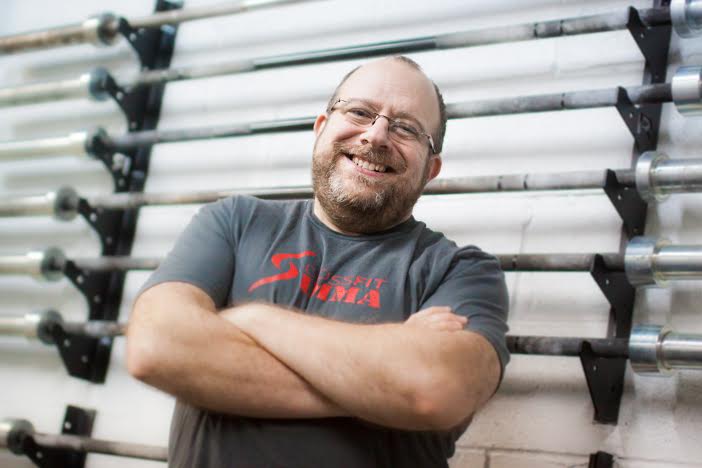Reporter Phil Gutis reflects his experience at AAIC — and on the barriers between lay people and scientists when it comes to the latest research on Alzheimer’s.
My first Alzheimer’s Association International Conference wrapped up quietly.
After filing six articles on topics ranging from blood biomarkers to exercise and LEGOs and Stephen Colbert, I sat in a quiet press room, chatting with friends as workers started to remove all the AAIC signage, dragging it back to the hidden interior of the conference center where, hopefully, it is recycled for the next huge gathering.
Ever since returning from my whirlwind trip to San Diego last month, I’ve been trying to think of how to wrap up a five-day conference that was filled with complex science, old friends, new friends and hope.
Then, before bed one night, I was doing a final scan of the news and I saw an article in the Washington Post about the new space telescope and the hidden mysteries about the universe it is unveiling.
“The fact that there are so many unknowns,” the author wrote, “should not be confused with the silly notion that we don’t know anything at all.”
With 4,000 bits of science presented at AAIC – from posters to small group sessions, large plenaries and everything in between – it was clear that there is much known about the brain and Alzheimer’s and related illnesses that cause its premature death. At the same time, though, I heard scientists over and over again say that we are just at the beginning of our understanding of the complicated organ that makes us us.
One researcher, Dr. David Wolk from the Penn Memory Center, summed it up by saying we are in a “transformative time.” His colleague, Dr. Jason Karlawish, spoke about the Alzheimer’s field living in a time of “anxious hope.”
Maria Carillo, the Alzheimer’s Association’s chief science officer, struck a balanced approach as she described the state of research into cognitive decline.
With Aduhelm, the first-ever government-approved disease-modifying treatment launched in 2021 and the possibility of others to come in the next year or so, Carillo called it an “exciting time.”
“But,” she added, “certainly a time of change and a time of deeper understanding.”
So, what’s changed — or is changing? Blood-based biomarkers are preparing to revolutionize the field. Studies such as one presented by a small company called C3N, which showed the potential of a diabetes drug to slow cognitive decline. The impact that even low intensity exercise can have on cognitive decline was remarkable.
But my biggest takeaway after a week’s reflection is that scientific conferences like AAIC in some ways represent a lost opportunity for educating lay people and people living with a cognitive disease like myself.
There is so much knowledge to be gained at a conference like this, but so much of it is impenetrable. After a media briefing that described positive interim results from a Phase 2 trial of a diabetes medication to restore brain health, I had the opportunity to sit down with the presenter, Dr. John Didsbury, CEO of T3D Therapeutics.
I gently chided Didsbury for his presentation at the briefing because it was so heavy on science that I really couldn’t understand what he was saying. I know it is my job as a reporter to translate science for a lay audience, but I asked if he could de-science his presentation for me.
Didsbury, a former academic and pharmaceutical executive, lit up. He began to describe the brain as the engine in a high-powered Lamborghini. He talked about the sugar that is the body’s primary source of energy and how insulin regulates blood sugar levels, allowing the Lamborghini’s engine to go from zero to 200 in milliseconds. When insulin isn’t working correctly, the engine is starved of its fuel, the blood sugar, and “it only goes from zero to 60,” Didsbury said. “And that’s cognitive decline,” he added. “That is probably the simplest analogy I can come up with.”
The drug Didsbury is working with, now in Phase 2 trials, would, to continue our engine analogy, clean up the spark plugs and injectors so that the insulin will work again in powering the engine. As someone who has long lived with type 2 diabetes, I hope to write a future piece about Didsbury and his company T3D. But for now, I hope to use my conversation with him to illustrate how scientists can translate their work for a lay audience eager to understand what they are doing.
And for the scientists and conference organizers who may be reading, there’s a hunger among lay audiences for this information.
A recently published paper published in the Journal of Alzheimer’s Disease by lead author Sara Walter from the University of Southern California’s Alzheimer’s Therapeutic Research Institute makes the case that trial participants, patients and care partners are willing to invest in attending and learning from scientific conferences.
“General audiences, in particular research participants, are advocating for greater participation in scientific conferences,” Walter writes. Again, I hope to explore Walter and her work more thoroughly in a future piece but let’s let her have the last word for this journal entry.
“A few of the people that came to the conference were worried they wouldn’t get much out of it, knowing that scientists use almost another language of acronyms when they are talking about research,” Walter told me.
Walter said the bottom line for her was that all the people that attended the conference were inspired — just as I was — “by being able to see just how many people are working on every level of this disease and hear them talk about the progress they are making.”
And Walter concluded that conference participants, again, just like me, were really energized for their own advocacy and their own commitment to research.
Are you reading, conference organizers?
Phil Gutis is a former New York Times reporter and current Being Patient contributor who was diagnosed with early onset Alzheimer’s. This article is part of his Phil’s Journal series, chronicling his experience living with Alzheimer’s and his participation in the aducanumab clinical trial.


